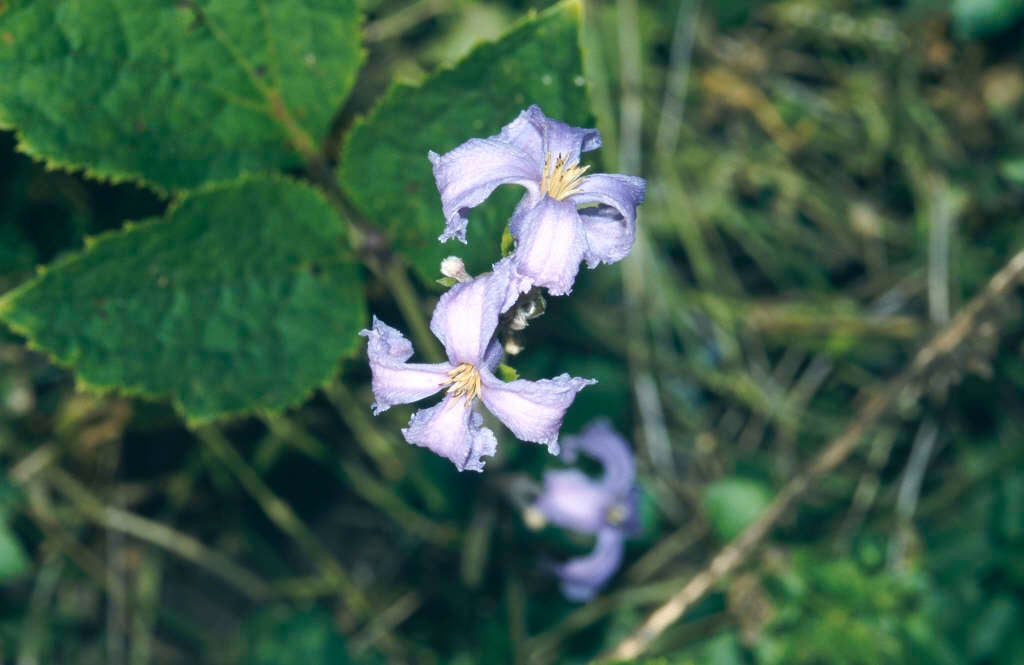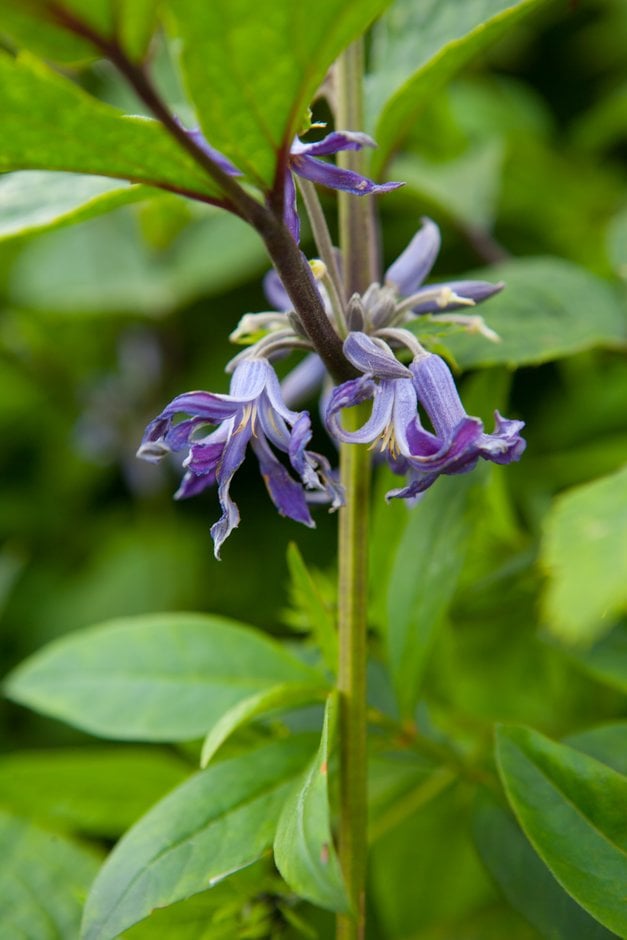Clematis tubulosa 'Wyevale' (H)
clematis 'Wyevale'
A small deciduous sub-shrub with lax stems bearing broad dark green leaflets. Fragrant single tubular flowers 4cm in width are deep mid-blue with four frilly margined recurved sepals and yellow stamens. Flowers mid summer to early autumn.
Size
Ultimate height
0.5–1 metresTime to ultimate height
2–5 yearsUltimate spread
0.5–1 metresGrowing conditions
Moisture
Moist but well–drainedpH
Alkaline, NeutralColour & scent
| Stem | Flower | Foliage | Fruit | |
| Spring | Green | |||
|---|---|---|---|---|
| Summer | Blue | Green | ||
| Autumn | Green | |||
| Winter |
Position
- Full sun
Aspect
West–facing or South–facing
Exposure
Exposed or Sheltered Hardiness
H6Botanical details
- Family
- Ranunculaceae
- Native to GB / Ireland
- No
- Foliage
- Deciduous
- Habit
- Climbing
- Potentially harmful
- Skin irritant. Wear gloves and other protective equipment when handling. Pets (rabbits): Harmful if eaten. For further information and contact numbers regarding pets, see the HTA guide to potentially harmful plants
- Genus
Clematis can be deciduous or evergreen shrubs or herbaceous perennials, mostly climbing by twining leaf-stalks, and often with showy flowers. Some have attractive fluffy seedheads in autumn
- Name status
Accepted
- Horticultural Group
- Heracleifolia Group consists of deciduous, woody-based sub-shrubs with erect or climbing stems, sometimes herbaceous, ternate or pinnate leaves, and narrowly bell-shaped or starry flowers on the current year's growth in summer and autumn
How to grow
Cultivation
Plant in a moisture-retentive, well-drained soil. Keep the base of the plant and roots cool and shaded by other plants or a layer of pebbles or flat stones at the base. Plant with the crown of the clematis at soil level. Mulch in late winter with garden compost or well-rotted manure, avoiding the immediate crown. Ideal for a border where it can be supported by other plants. See clematis cultivation for more advice
Propagation
Propagate by layering or semi-hardwood cuttings
Suggested planting locations and garden types
- Wall side borders
Pruning
Pests
May be susceptible to aphids, snails and caterpillars; petals may be eaten by earwigs
Diseases
May be susceptible to honey fungus (rarely), clematis wilt and clematis slime flux
Love gardening
Sign up to receive regular gardening tips, inspiration, offers and more
View our Privacy Policy
Get involved
The Royal Horticultural Society is the UK’s leading gardening charity. We aim to enrich everyone’s life through plants, and make the UK a greener and more beautiful place.

